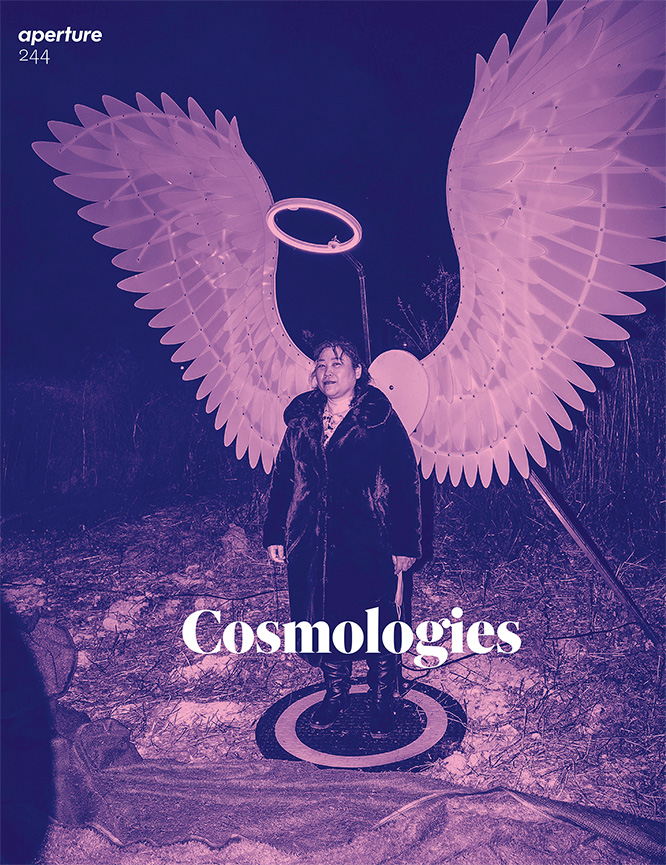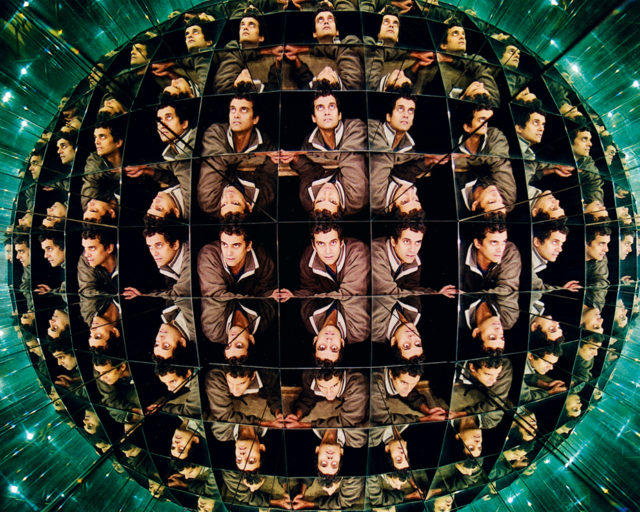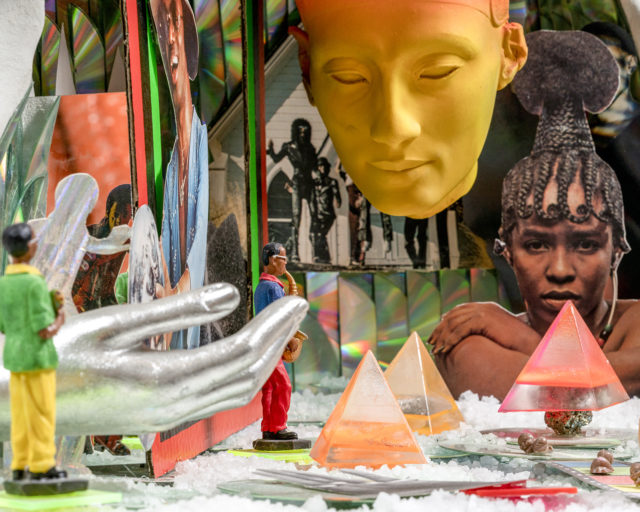Anne Hardy, Equilibrium, 2020
Soft color fields, obscure chemical compositions, hazy space photographs—Anne Hardy’s recent work presents us with evocative photograms that oscillate between the concrete and abstract, between the real and the fantastical. The hard-to-define images move gradually from an inky black to bright hues. Their color palette ranges from cool blue and turquoise tones to warm reds and orange tints, conveying an alternation between coolness and heat, or—as the title of one image suggests—the “rising of heat.”
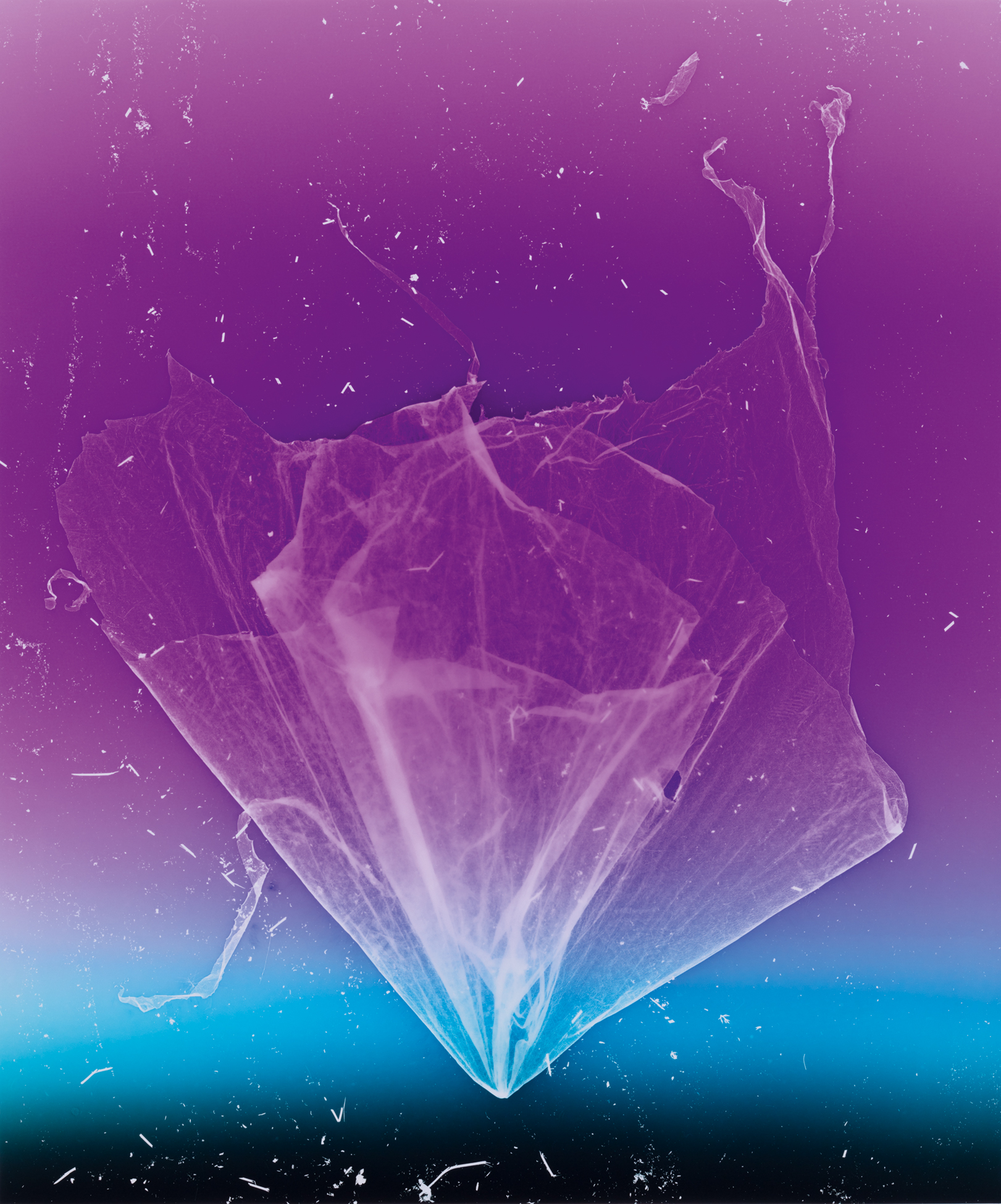
The photograms are based on encounters with light and small objects that Hardy gathered from the foreshore of the River Thames while she was working on her 2019 commission for Tate Britain, The Depth of Darkness, the Return of the Light. The large-scale, dystopian installation transformed the museum’s neoclassical façade into an abandoned building decorated with fairy lights, ripped banners, and a rhythmical cascade of objects. The dark, mystical aesthetic was accompanied by a soundscape that used elements recorded at the river.
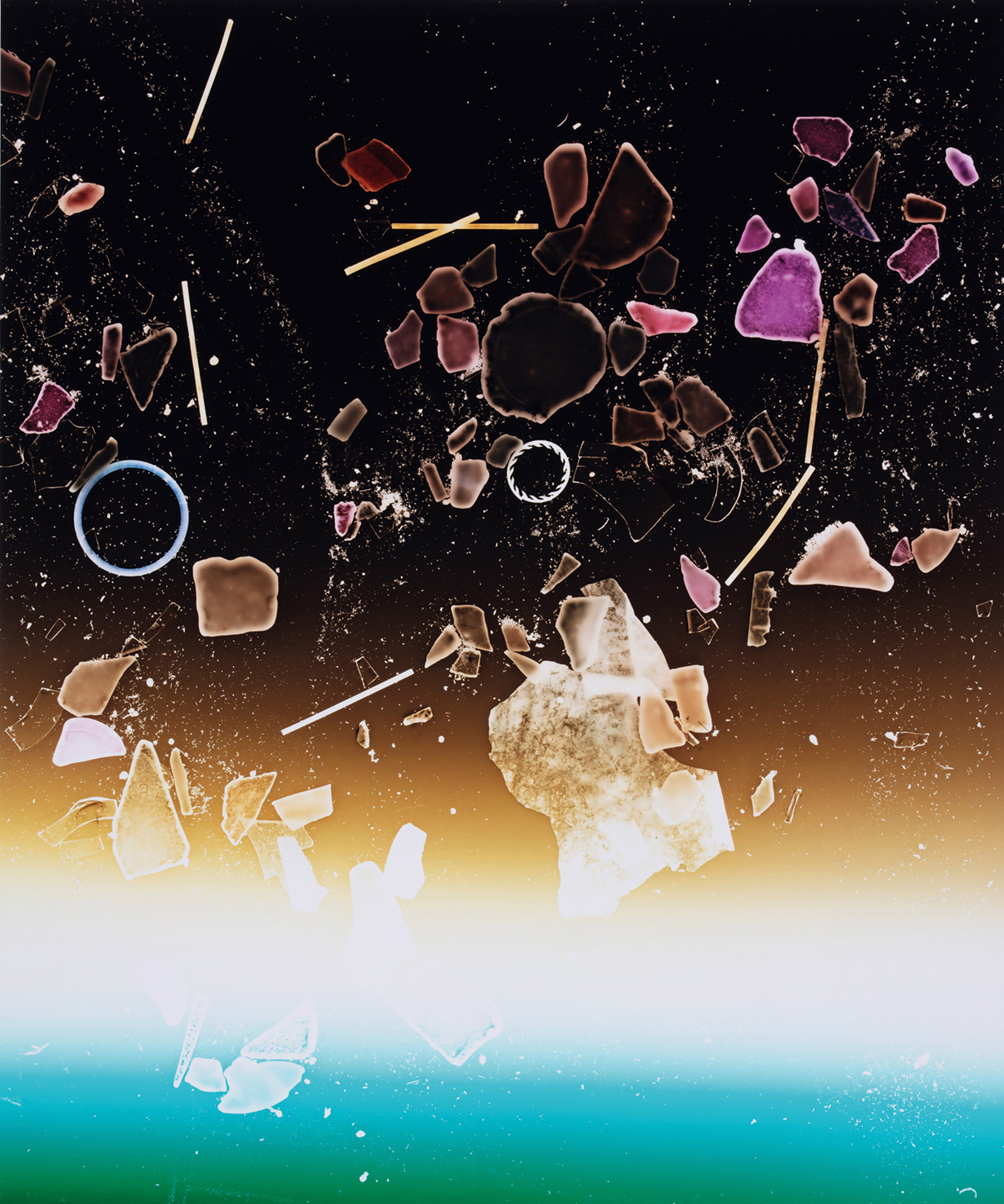

Hardy’s first photograms came into existence in 2015, when she was working on an exhibition at Modern Art Oxford. Using leftover materials and dusty debris swept up from the studio floor, she made a series titled Process Photograms that is comparable to the photograms of The Depth of Darkness, the Return of the Light in its atmospheric aesthetic. Through intuitive as well as highly controlled alchemical darkroom processes, Hardy composed her recent photograms during lockdown. London, usually bustling and busy, showed its vulnerability and was forced to stand still. Against this background, the link of the photograms to Hardy’s immersive Tate work seems particularly fitting, as the installation was essentially, according to Hardy, “about a point of collapse and fragility and what might spring from that as a result.” The Thames debris can be viewed as a sad representation of the extreme threat we humans cause the planet, which is gradually heating up. It symbolizes countless untraceable people and their long-lasting impacts on the earth, linking different times and spaces.
However, The Depth of Darkness, the Return of the Light is a multilayered photogram series that references the micro as much as the macro, the tangible outside as much as the intimate inside, physical space as much as perception, the conscious as much as the unconscious. The fragments from the river convey an infinite planetary aesthetic, and real objects suggest fantastical images. Asked about these relationships and transformations, Hardy has stated: “I’m interested in the ‘gap’ between what you call the concrete and the abstract as a productive space of reencounter and imagination, in which knowledge or certainty becomes more tenuous. . . . The micro and infinite seem interchangeable to me. It’s all about your perception and what scale of measurement you decide to apply—the same systems and energies are at work.”

Courtesy the artist and Maureen Paley, London
Whether the atmospheric photograms are viewed as depictions of tiny river objects or as fantastical space images, the series draws attention to time and its endless cycles of transformation, as reflected in titles such as Rising Heat or Into Darkness. Hardy herself stresses the potential of change. In the soft forms and bright colors of her photograms, there is a sense of postapocalyptic magic that turns old waste into new, beautiful art.
This article originally appeared in Aperture, issue 244, “Cosmologies,” under the title “Anne Hardy: Return of the Light.”











